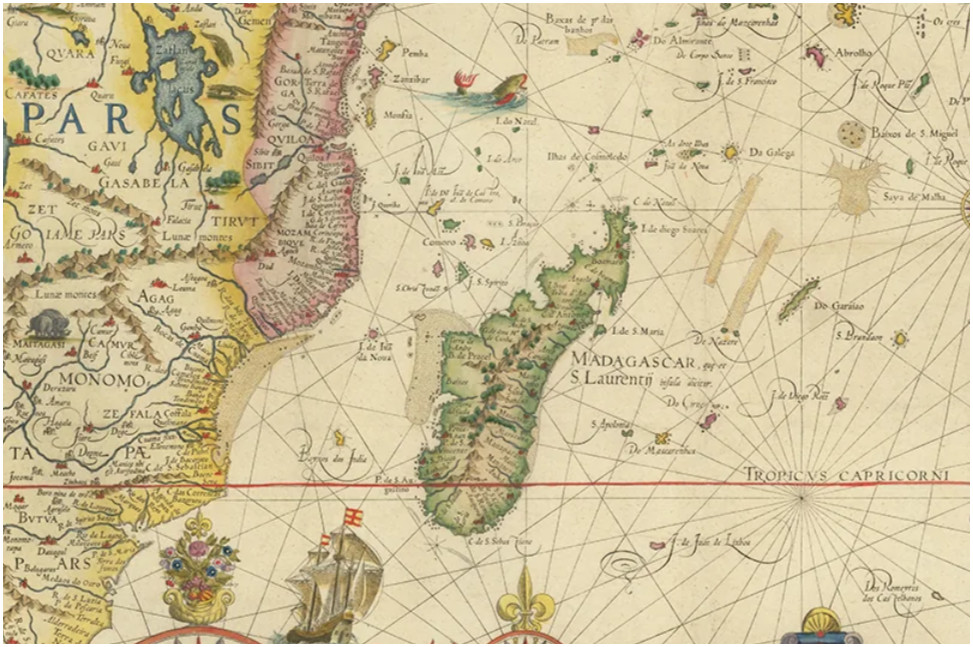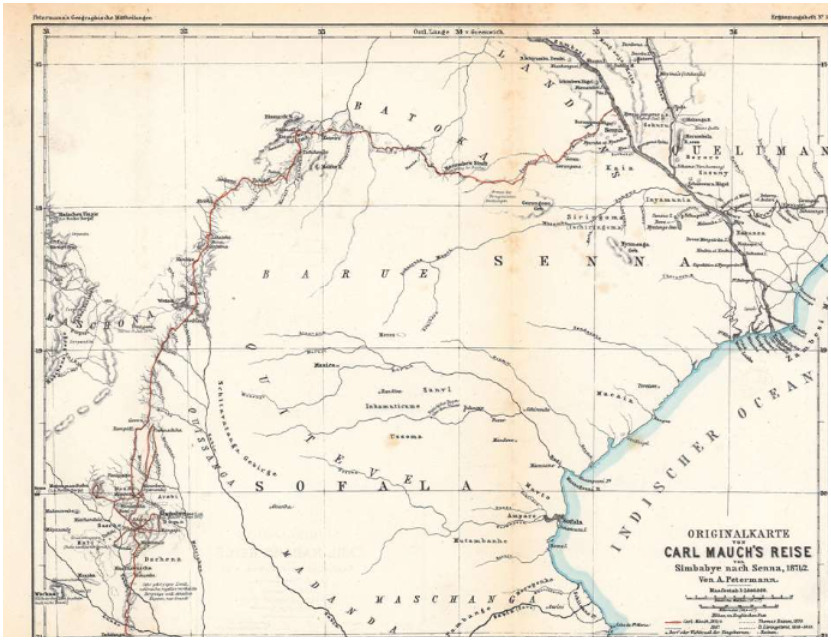Mozambique history

The Indigenous Races and Languages
I. Aboriginal and Early Invasions
The Aboriginal Peoples of the South
At the time of Vasco da Gama's arrival on the East African coast, the extreme southern portion of the continent was home to the earliest known indigenous inhabitants, characterized by two distinct groups: the Bushmen and the Hottentots. These groups represented the oldest layer of human habitation encountered by the Bantu migrations.
The Hottentots (Khoi Khoi)
The Hottentots (or Khoi Khoi) appeared slightly later in the historical sequence and represented a higher evolutionary stage than the Bushmen. It is hypothesized that the Hottentots emerged from an admixture between an unknown race and Bushmen women. They were generally taller and less primitive, having developed organizational structures that included tribes and recognized chiefs. Crucially, unlike the Bushmen, the Hottentots were herders who kept livestock, including cattle, sheep, and chickens. While their language also incorporated clicks, these sounds were less numerous than in the Bushmen tongue.
The Bantu Invasion and Displacement
The demographic landscape of Southern Africa was fundamentally reshaped by the overwhelming migration of Black peoples, collectively known as the Bantu. This significant movement originated in Central Africa, north of the Congo Basin, and commenced its expansion southward approximately years ago.
The Bantu were robust, physically strong, and brought with them a sophisticated set of cultural practices that marked them as distinct from the aboriginal groups:
Agriculture: They were proficient farmers and cultivators.
Metallurgy: They possessed knowledge of metalworking, demonstrating technological advancement.
Social Organization: They operated within structured social frameworks, complete with an organized system of government and rule.
The successive waves of Bantu migration eventually occupied most of the landmass, pushing the Bushmen and Hottentots to the continent's southernmost territories. The Bantu presence is linguistically defined by their characteristic use of prefixes; for example, the root word for 'person' is expressed as mu-ntu (singular) and 'people' as ba-ntu (plural).
II. External Cultural and Historical Influences

Early Contact and Arab Trade
The history of the East African coast, long before the arrival of the Portuguese, was shaped by profound and sustained interactions with external powers, particularly those from Arabia. This relationship was based primarily on trade, linking the interior of present-day Mozambique to the greater Indian Ocean network.
The Land of Ophir and the Zimbabwes
The trade route linking the coast and the interior is historically rich in gold and ivory. The region of Monomatapa, corresponding to the modern Mashona territory, was notably identified in certain historical traditions as the biblical Ophir. This long-distance trade is evidenced by the massive stone structures known as the Zimbabwes. These ruins are believed to have been constructed by South Arabian prospectors, with their origins potentially dating back as far as 2,000 years before Christ, showcasing a remarkably early and sophisticated external presence in the region.
Islamic Coastal Settlements
Following the rise of Islam, Arab groups established a series of influential trading posts along the coast, beginning around 930 to 1030 A.D. These included major settlements such as Quiloa and Sofala. These coastal centers rapidly monopolized the lucrative gold trade emanating from the interior. Significantly, these settlements functioned as independent commercial entities, disconnected from their Arabian mother countries, and were not considered colonies in the modern sense. They exerted substantial cultural and economic influence over the immediate coastal populations.
III. Indigenous Tribes and Conflicts (Portuguese Era)
The Prevailing Indigenous Groups
Upon the arrival and establishment of Portuguese influence, the interior of Mozambique was dominated by several large indigenous groups whose presence and organization formed the geopolitical reality of the time.
The Mocarangas (Ma-kalanga)
The most prominent indigenous race encountered by the Portuguese were the Mocarangas, also known as the Ma-kalanga. This extensive group's territory stretched from Inhambane up to the Zambezi River. They were distinguished by their organized political structures, ruled by powerful kingdoms. The highest chief among them was known by the dynastic title of Monomatapa, meaning "Lord of the Elephants." Notably, the Mocarangas were described as having milder customs and speech compared to the Moors who inhabited the coast.
The Tonga Group of the South
In the southern regions of the province, specifically around Lourenço Marques and Inhambane, various agricultural tribes were broadly categorized under the Tonga designation. These included groups such as the Ba-Tonga and Bi-Tonga.
This southern landscape was later drastically transformed by the Zulu invasion, which originated from the extreme south in the 19th century. The Zulu's powerful military campaigns and subsequent conquests led to the creation of vast, powerful empires in the region, fundamentally altering the existing social and political order of the Tonga groups.
Major Conflicts and Demographic Shifts
The internal dynamics of the region were subject to massive, destructive migrations that caused wide-scale mixing and scattering of the established populations.
The Zimbos/Mazimbos Invasion
Around the middle of the 16th century, a terrifying and destructive horde known as the Zimbos (or Mazimbos) emerged from Central Africa. These warlike Black people were feared for their cannibalistic practices. Their sweeping invasion devastated the Zambezi valley, leaving a trail of destruction that dramatically mixed and dispersed the original indigenous populations of the area.
IV. Social State and Colonial Policy
Bantu Social Life and Customs
The social state of the Bantu peoples at the time of European observation was marked by several distinct features, demonstrating a sophisticated, if non-European, system of organization and governance.
Governance and Justice
The Bantu were primarily an agricultural people, supporting large, established communities. Their social life revolved around a king, known variously as a Fumo or a Bano, to whom they showed extreme veneration. This structure included a developed system of laws and justice. A common practice for determining guilt or innocence was the trial by ordeal (murdave), a ritualistic procedure to reveal truth.
Family and Ritual Practices
Polygamy was a central feature of the family unit, with wives typically bought through traditional exchange practices. In terms of spiritual beliefs, the observation noted that the Bantu were generally without a concept of a unified God or the use of idols, instead focusing their religious-like devotion on the figure of the king. Additionally, the consumption of bangué (cannabis sativa) was documented as a social or ritualistic practice among the population.
The Need for Indigenous Legislation
The policy of uniformly applying the Portuguese Civil Code and Constitutional Charter to all native subjects was negative. The wholesale application of metropolitan law was deemed unsuitable for the existing social realities. Needed the creation of a specialized, localized indigenous legislation. This new framework would be based explicitly on the careful codification of the specific customs and usages of the various distinct groups, such as the Macua, Ma-Tonga, and Ronga, ensuring that colonial law was iresponsive to native traditions.
V. Linguistics
The Bantu Language Family
The indigenous languages of the province belong to the vast Bantu language family. This family is characterized by its use of grammatical prefixes to denote class and number, distinguishing it from the click-based languages of the aboriginal peoples.
Within Mozambique, the Bantu dialects are broadly organized into specific, identifiable groups.
Key Dialect Groups
Linguistically, the province's dialects are divided into groups possessing unique features:
The Macua Group: This is noted as an isolated group within the Bantu family, suggesting it represents a more ancient, distinct Bantu form.
The Tonga Group: This group is characterized by its widespread distribution across the region.
Dialectical Variations and Identification
The linguistic landscape shows continuous transitions and variations across neighboring dialects, akin to steps on a gradual slope. These variations often involve subtle phonetic shifts..
The Ronga Dialect: The Ronga dialect, spoken in the area of Lourenço Marques, holds significant practical importance. It is identified as the most generally understood language throughout a wide area, from Maputo up to the Save River. This widespread intelligibility made Ronga the most convenient medium for communication with Europeans in the southern part of the province.
Your Title
This is where your text starts. You can click here and start typing. Sed ut perspiciatis unde omnis iste natus error sit voluptatem accusantium doloremque laudantium totam rem aperiam eaque ipsa quae ab illo inventore veritatis et quasi architecto beatae vitae dicta sunt explicabo nemo enim ipsam voluptatem.